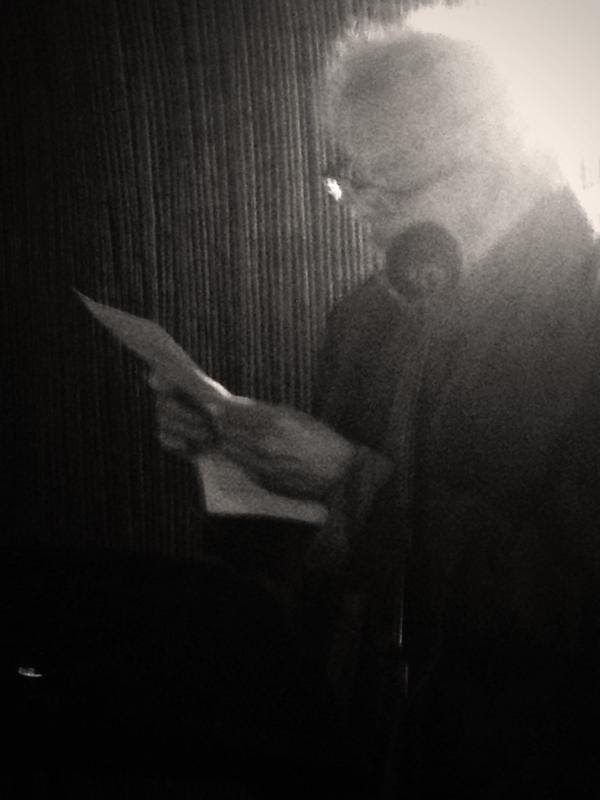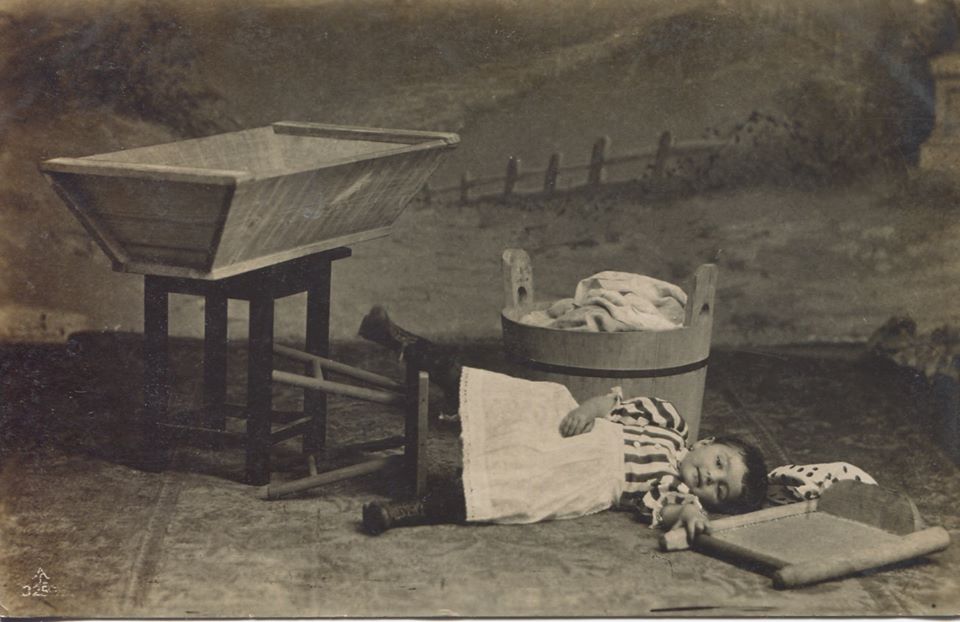Following the success of his box-office hit American Snipe, about a killer bird, Clint Eastwood has announced his next project. Rather excitingly for all of us here at Hooting Yard, the octogenarian titan of cinema has bought the rights to the Petula Clark Trilogy. My understanding is that, rather than making a series of three films, Bourne-style, Mr Eastwood intends to compact the narrative into a single movie, entitled American Snipper. As this title indicates, the film will be a character study of the collector who originally snipped out of newspapers the Petula Clark cuttings. Thanks to Max Décharné, I am able to reproduce one such cutting here. (Click to enlarge.)
Author Archives: Frank Key
The Petula Clark Minefield
Just as Jason Bourne has an identity, a supremacy, and an ultimatum, so Petula Clark has files, a project – and a minefield. The Petula Clark minefield was the happy outcome of my determination, with the Petula Clark project, to put to good use the materials in the Petula Clark files, which I had collected in the 1960s and kept, for fifty years, in a remote secure storage facility guarded by wolves.
The idea came to me when, one windswept morning, I was sashaying along a majestic and important boulevard in my bailiwick. All of a sudden, my boon companion Walter Mad, the animal behaviourist, amateur electrician, and van owner, drove up alongside me in his van, slowed to sashaying pace, wound down his window, and shouted at me.
“I have inherited a field!” he cried.
Later, over tea and toffee, I learned more. An elderly Mad uncle had died and left to his nephew, in his last will and testament, a field, somewhere out in the blasted and awful countryside.
“If it were a magnetic field,” moaned Walter Mad, “I might be interested. But it is nothing more than a flat expanse of mud and muck out beyond the Blister Lane Bypass, past the viaduct and the ha-ha and the decoy duckpond and the foopball pitch and the giant cement statue of Nobby Stiles and the weird cloud of ectoplasm and the bridge over the river Horrible and the vinegar works and Pang Hill Orphanage and the clown hospital and the blasted heath and the Bolshevik ballet school and the forest of gargoyles and the sump of slurry and the remote secure storage facility and the -”
“Wait!” I cried, “This field of yours is near the storage facility?”
“Had you allowed me to finish I would have listed several more significant landmarks on the way but, yes, it is fairly close by, as the crow flies.”
“I have an idea!” I cried, and I jumped into the van and told Walter Mad to drive like the clappers.
My idea was the Petula Clark minefield. Through Walter Mad’s inheritance, we had the field. The next step was to remove the Petula Clark files from the remote secure storage facility, and then to remove each of the six or seven press clippings from its buff cardboard folder. The folders we tossed, unsentimentally, on to a nearby bonfire. It was then a simple matter to have each of the six or seven press clippings laminated, to protect them against the many and various calamities of awful countryside weather. Once laminated, each press clipping was attached to one end of a pointy stick – that is, to the non-pointy end.
At this stage I had not decided whether the Petula Clark minefield would accommodate one customer at a time, armed with all six or seven pointy sticks to which were attached the laminated Petula Clark press clippings, or six or seven customers simultaneously, each armed with a single pointy stick. Six or seven customers at a time was probably the better option, as it would allow us to advertise the Petula Clark minefield as a splendid opportunity for awayday team-building exercises for middle managers in small to medium size companies.
Imagine the fun, as the six or seven customers are handed a pointy stick each, to one end of which is affixed by twine a laminated press clipping about Petula Clark. They must now make their way across the flat expanse of mud and muck, prodding the ground at intervals in an attempt to locate the mines submerged just below the surface. If they successfully locate each of the six or seven mines with their pointy sticks, they win. But if they inadvertently tread upon a mine, they lose.
The mines themselves are not explosive. Instead, using a clever bit of electrical gubbins concocted by Walter Mad using his amateur electrician skills, when a mine is “detonated” it blasts forth, at deafening volume, a recording of Petula Clark singing her tiptop hit, written by Tony Hatch and first released in 1964, shortly before I began to compile the Petula Clark files, “Downtown”.
What an exciting day that was, when Walter Mad and I first opened the Petula Clark minefield to paying customers! I felt a warm glow of content that I had at long last put the Petula Clark files to good use by devising the Petula Clark project and, with the Petula Clark minefield, bringing it to fruition. The lesson, I think, is that even when one of your activities seems utterly pointless – and believe me, there were times over the past half century when I wondered why on earth I clung on to those six or seven Petula Clark press clippings and kept them in a remote secure storage facility guarded by wolves – there is always the chance that you can take the pointless and make it pointy. That is what I did, and you can too, especially if your boon companion inherits from a Mad uncle a flat expanse of mud and muck.
The Petula Clark Project
For more years than I could count, my Petula Clark files had lain undisturbed in a remote secure storage facility guarded by wolves. It would be a platitude to say that the files were “gathering dust”. It would also be untrue, for the storage facility was a dust-free one. The precise details of how this dustless state was achieved elude me, though no doubt it had something to do with the janitor’s proud boast that he kept a trained swarm of dust-gobbling bluebottles.
It was this very same janitor who came hammering at my door one morning, waking me from uneasy dreams. I cannot recall precisely what figments in my sleeping brain so unnerved me, though bluebottles and Tony Blair and a bag of frozen crinkle-cut oven chips were all involved. I doused these phantoms by plunging my head into a pail of ice-cold water, then pranced like a ninny downstairs to answer the hammering.
The janitor was gaunt and had the appearance of a wistful stickleback. If you find that a difficult image to visualise, fetch a pencil and a piece of paper and execute a sketch. Now do you see?
The ostensible purpose of the janitor’s visit was to canvass for the Communist Party. I was not aware that there was an election in the offing, and told him so. He gave me that wistful stickleback gaze (see sketch) and muttered inanities. Nevertheless, I invited him in for a cup of boiling hot tap water and a biscuit. I do not receive many visitors, so when I do I like to lavish them with such hospitality as I can muster. I also considered that an early morning conversation with a Communist might help to dispel the last few vestiges of my uneasy dreams still swirling in my head.
It was during the course of our discussion, when the janitor had exhausted the topics of imperialist lackeys and tractor production and ballet in the evenings, that he made mention of my Petula Clark files. What, he wanted to know, was my purpose in keeping them for so long, neglected and unattended? I have to admit that I had no ready answer to this question. I had no idea why I clung on to these six or seven Petula Clark files, each one a buff cardboard folder containing a single press clipping about Petula Clark, the original five or six files augmented at a slightly later date by the sixth or seventh which held a colour photograph of the chanteuse snipped from a colour supplement.
I have been asked, from time to time, or, as per another singer, Cyndi Lauper, time after time, why I cannot be specific about the precise number of Petula Clark files, given they are so few. The truth of the matter is that I have so little interest in Petula Clark that I have never bothered to make a tally of the items in my collection. It is for the same reason that, having placed the Petula Clark files in storage, I very seldom trekked out to that remote facility to consult them. Indeed, I could not remember the last time I had visited, and nor could the janitor. It may be pertinent that I have yellow jaundice, as has the janitor. He is also green about the gills, but I am not.
The janitor lost patience awaiting from me a reply which did not come, and he got up to leave. He excused himself by saying he had to attend the public humiliation of a bourgeois lickspittle. I think he was telling the truth, for I had noticed he was carrying a hooter in his knapsack, of the sort used to amplify imprecations and insults at deafening volume at close range to the ears of bourgeois lickspittles. I had once been accused of being such a lickspittle myself, and it was only by dint of pomposity and bribery by pastry delicacies that I escaped censure.
Alone again, I fell to thinking. Usually, of course, in these circumstances I would think about wolves and their ways, but the janitor’s query had turned my mind to Petula Clark, or rather to the files I kept on her, and had kept, through thick and thin, over many decades. Would I not be better off removing the files from the remote secure storage facility and consigning them to a rubbish tip? Or, if I did not want them to go to waste, could I not burn them in my grate, and at least profit from a short period of welcome heat on one of the long winter nights when I shivered in my armchair, wrapped in several cardigans and two different woolly hats?
Yet to discard or to destroy the Petula Clark files seemed to me both, somehow, to be unconscionable acts. I did not care very much for Petula Clark, and it was exceedingly unlikely she would ever learn of the files I kept on her, but what if she did?, what if she did? I think it is fair to say she would be distraught, albeit only mildly – though who can say? – and I had no wish to cause Petula Clark distress. I wish no pain upon anybody, unless it be a thief bent on breaking into the remote secure storage facility to pilfer my Petula Clark files, who will be savagely attacked at the perimeter fence by my trained, if not yet electrified wolves, and richly deserve to be torn to bits by their sharp and merciless fangs.
No, it seemed to me that what I ought to do, what I ought to have done years ago, was to make good use of the Petula Clark files. But what use? In a flash of inspiration, I realised what I needed to do. I would devise a Petula Clark project, an activity which would not only keep me occupied in the twilight of my years but would also make full, novel, and innovative use of the materials in the Petula Clark files. I sprang up from my chair and cut three or four brisk capers around the room, as if I was James Boswell getting up in the morning. And then, panting with exertion, I resolved to embark upon the Petula Clark project without delay.
But the years have taken their toll, and my resolve was no longer the manly Jack Hawkins stern-jawed resolve of my more youthful days, when I had resolved, successfully, to find an efficient storage method for the Petula Clark files. I was winded from my capers, and I slumped back in my armchair, panting like a wolf. Shortly thereafter, I fell asleep.
I am happy to say I did not dream of bluebottles and Tony Blair and a bag of frozen crinkle-cut oven chips. I dreamed, instead, of Petula Clark, and the files, and the project I would devise once I awoke. At the time of writing, I am still asleep, effectively, if we consider that anything other than full bright brilliant bedazzling enlightened clarity of all five senses in a blaze of utter receptivity to the gorgeous world is a form of sleep. But when I do wake up, fully, ah, then …
The Petula Clark Files
I keep my Petula Clark files in a remote secure storage facility. The perimeter fence is electrified, and patrolled by wolves. The wolves are not electrified, but I am working on it, in partnership with the animal behaviourist and amateur electrician Walter Mad. The wolves have been trained to become docile at my approach, but to attack savagely anybody else, including Walter Mad. The combination of fence and wolves and some fairly stout padlocks ensures that my Petula Clark files remain safe and secure.
It is fifty years since I began my collection. There was a brief report in the local newspaper of the seaside town in which I then lived, announcing a forthcoming concert by Petula Clark. I snipped it out of the paper with a pair of scissors and put it on my desk, under a seaside pebble. Over the following few months I snipped out of various papers several reports in which Petula Clark was mentioned. Some of these were illustrated with photographs of the chanteuse, though the photographs themselves were of low quality, as were most newspaper photographs in those days.
By the time I had accumulated five or six such snippages I lost all interest in Petula Clark. Looking back, it is fair to say that I was never particularly interested in her in the first place. I spent far more of my time, for example, thinking about and studying and even attempting to imitate the behaviour of wolves. Eventually, one blazing summer morn, I looked at the seaside pebble on my desk, and the five or six press clippings related to Petula Clark underneath it, and I resolved – with a sort of manly Jack Hawkins stern-jawed resolve – to find a more efficient storage method for them. After all, it had occurred to me more than once that, were I to move the seaside pebble for any reason, and my window was open, and a gust of wind blew in, billowing the curtains, the cuttings, all five or six of them, could be scattered, untidily, and – perhaps, perhaps – be lost forever.
Hence the files, by which I refer to buff cardboard folders. I bought a packet of these at a stationer’s. I distinctly recall that on my walk to and from the shop, which took about fifteen minutes each way, I did not see a single wolf. This saddened me, but I was consoled, on the way back, that I had acquired a suitable means of storage for my collection of five or six Petula Clark press clippings. I was so eager to return home and set to work that I did not, as I usually did, stop off at the ice cream kiosk to buy a choc ice, which I would then eat while sitting on a seaside bench and staring out to sea. Walter Mad has hatched a scheme to use half-eaten choc ices as bait in the process of electrifying wolves. I must admit I did not quite follow his reasoning, but I feel sure it is sound.
Once home, and having unwrapped from their cellophane the buff cardboard folders, I took five or six of them and placed a Petula Clark snippage into each one, having first, of course, moved the seaside pebble to one side on my desk. I considered marking the folders, for example by writing “Petula Clark Press Clipping No. 1” (and so on, up to No. 5 or No. 6) on the front of each one, but I decided against this. My decision was made the easier because, at the time, I recall I had mislaid my pencil, and I only discovered it some days later, tucked against the wainscot on the opposite side of the room. How it came to rest there I shall never know.
I placed the folders in one of the desk drawers, made a cup of tea, and settled back to gaze at a picture book of wolves I had borrowed from the seaside library. It was long overdue, but I was young and feckless and reckless, and I did not give a hoot.
Despite the fact that I no longer had any interest in Petula Clark, my collection was not yet complete. About three years later, riffling through a colour supplement, I came upon a quarter-page colour photograph of the star, and in a sudden frenzy, as if gripped by demons, I reached for my scissors and snipped it out. Fortunately, in spite of the passing of the years, I had the remainder of the buff cardboard folders close to hand. I took one, placed the colour photograph of Petula Clark inside it, and added it to the collection in the desk drawer. Outside, the sky had darkened, and I swore I could hear the distant howling of a wolf. At that time, I had not yet gained the acquaintance of Walter Mad, so I was not in a position to telephone him to confirm whether that was indeed what I heard.
Many more years passed before I decided to transfer the Petula Clark files from my desk drawer to a remote secure storage facility. The process was surprisingly straightforward, and was accomplished in a single afternoon, with the assistance of Walter Mad, who by this time had become my boon companion. In addition to being an animal behaviourist and an amateur electrician, he also owned a van, which he drove at terrifying speed while wearing a pair of goggles and some sort of home-made cobbled-together gutta percha breathing apparatus. Having secured the Petula Clark files deep in the bowels of the facility, we drove back via an ice cream kiosk and stopped to eat celebratory choc ices while staring out to sea.
I broke our contented silence by asking Walter Mad if wolves are able to swim.
“That very much depends on the wolf and the conditions in the sea,” he said.
“And Petula Clark,” I continued, “Can she swim?”
“I am no expert in Petula Clark matters,” he said, “But I expect she can, yes.”
That was precisely the answer I wanted to hear, though I could not think for the life of me why, as I had no great interest in Petula Clark, then or now.
We digested our choc ices – Walter Mad saving half of his, uneaten, for baiting experiments with wolves – and drove away from the kiosk, as the sun sank in the west, and waves crashed relentlessly against the pointy rocks.
The Light Pours Out Of Me
Here is a snap taken at Yada’s restaurant in Peckham last night, where I did a reading as part of the LitCrawl festival. The photo was taken by one of my fellow-readers, Tony White, and also on the bill was Audrey Reynolds. I read a couple of stories and also took the opportunity to extol the many and various virtues of Mr Key’s Shorter Potted Brief, Brief Lives, waving a copy of the book at the audience and reading a couple of extracts. This, for example, provoked pleasingly immoderate laughter:
Scott, George R. (British poultry expert, 20th century). Scott was the author of the 1934 book The Art Of Faking Exhibition Poultry. In the introduction, Socrates, Galileo, Voltaire, Nietzsche and D. H. Lawrence are each called to support his attack on the despicable practice, nowhere more vile than in “the pseudo-scientific Hogan cult, with all its blowsy jargon; its crapulous fundament of snide anatomy; its noisy and prolific drool of whim-wham”.
Swabian Hothead
Perhaps the least-known of the Swabian hotheads, so obscure that we do not know his name, and have never known it, can be seen in the bottom left corner of a mezzotint by the noted mezzotintist Rex Tint, where he is to be seen in full Swabian hothead mode, suitably attired and, we surmise, purple-faced in the throes of tempest, though the mezzotint is monochrome, yet purple we see, by dint of Rex Tint’s artistic chops, honed, if his sister Dot Tint’s memoir is to believed, and why should it not?, upon Tyrolean peaks, in inclement weather, with pencil and paper, and a pipe stuck in his mouth, as gales howled around him, scribbling furiously with the same scribbly fury he would bring, famously, later, oh! years later, to his depiction, so gauche yet valiant, of the Swabian hothead in the corner of a mezzotint otherwise empty of human figures, a picture populated largely by cows, and herons, or moorhens, or some other birds, for as was often said of Rex Tint, not least by his sister Dot Tint, in her memoir, if there was one thing the maestro could not do, for love nor money, it was to draw accurately any of the birds which God created to bless the skies, if, that is, that was the reason for their divine invention, during the seven days of creation, or rather six, six, I am forgetting that on the seventh day He rested, just as Rex Tint liked to take a day off from his indefatigable mezzotinting at least once a week, usually on a Thursday, when he would prop up the bar at his local kloppisguelph and knock back an entire litre of absinthe, in homage to the habits of his hero Ernst Ludwig Kirchner (1880-1938), but so unlike the Swabian hothead, who never rested at all, never, never, so hot was his head that it never allowed him to rest, at least not when he was in Swabia, and he was always in Swabia, as far as we know, he never went further afield, they wouldn’t let him, they’d’ve stopped him at the border, forbidden him to cross, wisely, it has to be said, wisely, for who can guess at the enormities that would ensue if once the Swabian hothead were given entirely fresh territories in which to be a hothead?, it fair boggles the brain, mine at least, and possibly yours too, though I cannot guarantee it, even if you have been concentrating hard, and furrowing your brow, and chewing the end of the pencil with which, I hope, you have been taking notes, scribbling furiously, like Rex Tint atop a Tyrolean peak, all those years ago, smoking his pipe, swept by gales, that will do for the time being.
Caption Competition
Puffery
Here is an (anonymous) review on Amazon of Mr Key’s Shorter Potted Brief, Brief Lives:
This is a near-perfect example of a gift book that keeps on giving. Small and appealing, with a well-organised, encyclopaedia-style layout and charming portrait illustrations. The text is a delight – easy to dip in and out of, and full of facts that are perplexing, bizarre, amusing and sometimes poignant. What really sets it apart, however, is Frank Key’s unerring eye for the deliciously obscure and his unique sense of humour, which runs like a seam of precious metal through the book. An unexpected treasure.
I need hardly remind you lot that you are under instructions to buy copies of the book for everybody you know. While you’re about it, you should add your ha’ppenyworth to the online reviews at Amazon. You know it makes sense.
Narcoleptic Presbyterians
Tomorrow sees, at long last, the publication of my important reference book Mr Key’s Shorter Potted Brief, Brief Lives. Within its pages you will learn, among much else, that Eric Clapton is an anagram of Narcoleptic, that Britney Spears is an anagram of Presbyterians, and that, during a foopball match in which the Brazilian Ronaldo faced an opposing defender named Rolando, a commentator asked “how long is it since Ronaldo was marked by an anagram of himself?”. There is much more in the book other than anagrams, so go and queue up at your nearest bookshop for opening time tomorrow morning …
Indisposed
Since returning from my jaunt to Belgium I am afraid I have been somewhat indisposed. I shall spare you the details. Suffice to say that my brainpans remain in full (if uninspired) working order. Fine fettle? I would need to consult a qualified fettlist to be sure on that score.
But things are gradually getting back to normal. There was a new piece in The Dabbler on Friday, and after the Resonance summer break Hooting Yard On The Air is back on the air. Last week’s show is available here, and I ought to remind you that each show now appears on Mixcloud almost as soon as it has been broadcast.
Added to which, my book Mr Key’s Shorter Potted Brief, Brief Lives is – at long last – published the day after tomorrow. Of which more later.
In theory I will be back here tomorrow. Fingers crossed.
Toppled Infant
A Gent In Ghent
I am off to Belgium for a bit. Upon my return, I will strive – well, if not every sinew, then at least some of the more sinewy ones, to revive Hooting Yard so that it is once again a busy and bustling thoroughfare o’ prose.
Birdsong
I have decided to devote my life to birdsong. No, not that kind of birdsong, all those trills and squawks and cooing noises that birds make. I mean songs about birds. I have not quite worked everything out in my head, but the general idea is to take familiar songs, not originally about birds, and to amend the lyrics to make them more bird-focussed. I feel this would provide an invaluable musical service for both humans and birds. As an example, here is the first fruit of my project, a rewrite of David Bowie’s 1979 hit Boys Keep Swinging. I hope you will agree that this revised version is superior in every way, particularly from an ornithological point of view.
Heaven loves ya
The clouds part for ya
Nothing stands in your way
When you’re a grebe
Plumage regales ya
Life is a pop of the cherry
When you’re a grebe
When you’re a grebe
You can soar through the air
When you’re a grebe
Other grebes check you out
You get a fish
These are your favourite things
When you’re a grebe
Grebes
Grebes
Grebes keep swinging
Grebes always work it out
Uncage the colours
Unfurl the flag
Luck just kissed you hello
When you’re a grebe
They’ll never clone ya
You’re always first on the line
When you’re a grebe
When you’re a grebe
You can dabble about on a pond
When you’re a grebe
Learn to dive and everything
You’ll get your share
When you’re a grebe
Grebes
Grebes
Grebes keep swinging
Grebes always work it out
Classical Grunting
As Hooting Yard is the home of The Grunty Man, I thought I should draw to your attention the latest “Ancient and Modern” column by Peter Jones in The Spectator:
What a pleasure it was to watch the men’s final at Wimbledon contested with a minimum of grunting, exclaiming and gesticulation. Romans would have approved.
It was well known that athletes and those taking exercise had a tendency to grunt. Seneca the Younger (c. 4 bc–ad 65), multi-millionaire Stoic philosopher and adviser to Nero, described his unfortunate lodgings over the baths, which made him abhor his ears: quite apart from people hawking their wares, depilators making their victims shriek, bathers singing out loud and splashing about, ‘those working out with weights — whether actually working out or just faking it — grunt away; when they let out their breath, they emit shrill wheezes’. The satirist Juvenal mocks the way female gladiators, taught by their trainers to prepare for the real thing, ‘grunt while they practise thrusts at a tree-stump (and then reach for the potty)’.The assumption is that the grunting associated with exercise was largely a matter of showing-off: it sent out the message ‘look what a heroic effort we are putting into all this’. In a philosophical dialogue, Cicero shines a different light on the matter. Discussing mastery of pain, he sees an analogy between bracing the soul in order to keep a stiff upper lip and bracing the body to sustain a supreme physical effort. In both cases, a groan or grunt may help. He cites athletes in training, especially ‘boxers who, unleashing a blow on their opponent, emit a grunt… in order to tense up the body and so increase the force of the hit’. To that extent, Cicero goes on, a man in pain may release a groan — but nothing feeble or piteous — if by bringing a degree of relief it will strengthen his will for the battle against it.
The two Wimbledon finalists provided an admirable example of skill, determination, self-control and minimal, functional grunting. Perhaps the professional grunters and ranters might mend their ways if crowds grunted and ranted back at them in mocking unison.
I feel inspired by this to write a fat and comprehensive World History Of Grunts And Grunting. Watch this space.
Buzz!
Dear Mr Key, Are you still alive?
Dear Mr Key, Has your pea-sized yet pulsating brain finally given up the ghost?
Ahoy there Key!, Is there a terrible vacancy between your ears we devoted readers ought to know about?
These are just some of the letters I have received in response to the eerie silence which has fallen over Hooting Yard like a leaden pall. The awful truth is revealed in today’s Dabbler, and it is all about bees!








